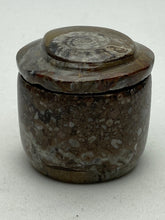Triceratops: Unveiling the Majestic Beasts of the Hell Creek Formation
In the rugged badlands of Montana, Wyoming, and the Dakotas, lies a geological marvel known as the Hell Creek Formation. This ancient sedimentary deposit, dating back to the Late Cretaceous period, approximately 66 million years ago, holds within its layers a treasure trove of prehistoric relics. Among the most iconic inhabitants of this bygone era are the formidable Triceratops, whose fossilized remains offer a captivating glimpse into the world of the dinosaurs.
Triceratops, meaning "three-horned face" in Greek, is one of the most recognizable dinosaurs of the Late Cretaceous. With its massive body, bony frill, and three distinctive horns protruding from its skull, this herbivorous behemoth was a formidable presence on the ancient plains. Today, Triceratops fossils found in the Hell Creek Formation provide invaluable clues about their anatomy, behavior, and ecology.
The Hell Creek Formation, with its diverse array of sedimentary rocks ranging from sandstones and mudstones to coal beds and lignites, provides ideal conditions for the preservation of fossils. Over millions of years, the remains of plants and animals that once inhabited the region became buried beneath layers of sediment, gradually fossilizing into stone. The result is a rich fossil record that offers insights into the ancient ecosystems of the Late Cretaceous.
Triceratops fossils found in the Hell Creek Formation are exceptionally well-preserved, thanks to the region's arid climate and rapid burial processes. Complete skeletons, partial remains, and even fossilized footprints of these majestic creatures have been unearthed by paleontologists over the years, shedding light on their size, morphology, and evolutionary adaptations. From juvenile specimens to fully-grown adults, Triceratops fossils provide a comprehensive view of their life history and growth patterns.
One of the most famous Triceratops discoveries in the Hell Creek Formation occurred in 2004, when paleontologists uncovered "Big John," one of the largest and most complete Triceratops skeletons ever found. Measuring over 25 feet in length and weighing an estimated 6 to 8 tons, Big John provided scientists with unprecedented insights into the anatomy and biomechanics of these ancient beasts. Subsequent discoveries, including those of "Lane" and "Alice," have further enriched our understanding of Triceratops diversity and variability within the Hell Creek Formation.
The study of Triceratops fossils from the Hell Creek Formation has yielded a wealth of scientific knowledge about these iconic dinosaurs. By analyzing their bones, teeth, and growth patterns, scientists can reconstruct aspects of their biology, such as diet, locomotion, and reproductive behavior. Additionally, the discovery of fossilized skin impressions and soft tissues has provided clues about Triceratops' external appearance and physiology, painting a vivid picture of life in the Late Cretaceous.
Beyond their scientific significance, Triceratops fossils from the Hell Creek Formation capture the imagination and curiosity of people around the world. From museum exhibits to documentaries and popular media, these ancient creatures continue to inspire wonder and fascination, reminding us of the Earth's rich natural history and the marvels of evolution.
In conclusion, Triceratops fossils found in the Hell Creek Formation are more than mere remnants of a distant past; they are windows into a lost world, where giant reptiles once roamed the ancient plains. As scientists continue to uncover the secrets of these majestic beasts, may their legacy endure as a testament to the wonders of Earth's prehistoric past and the importance of preserving our planet's natural heritage for generations to come.






